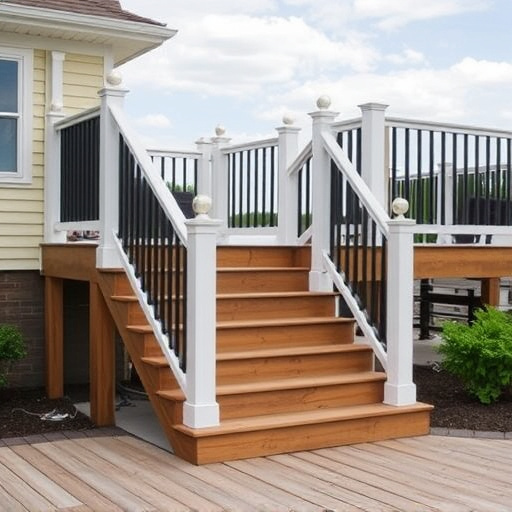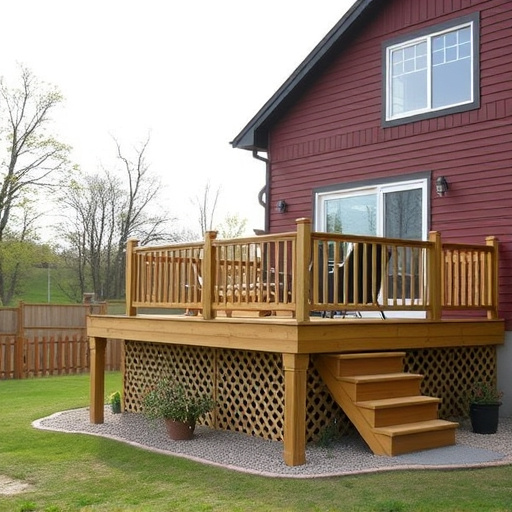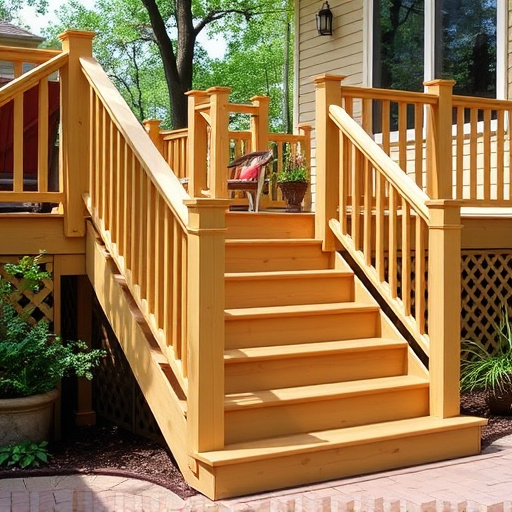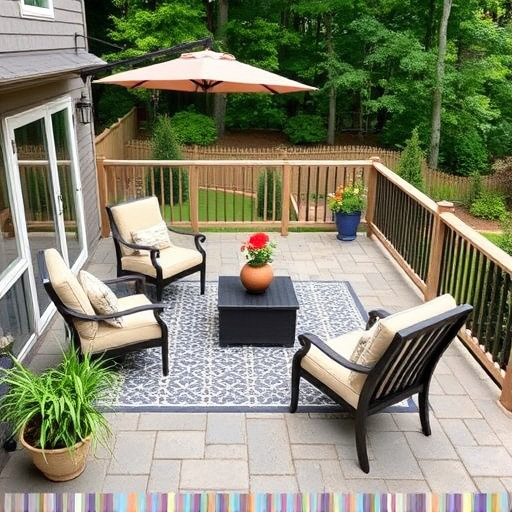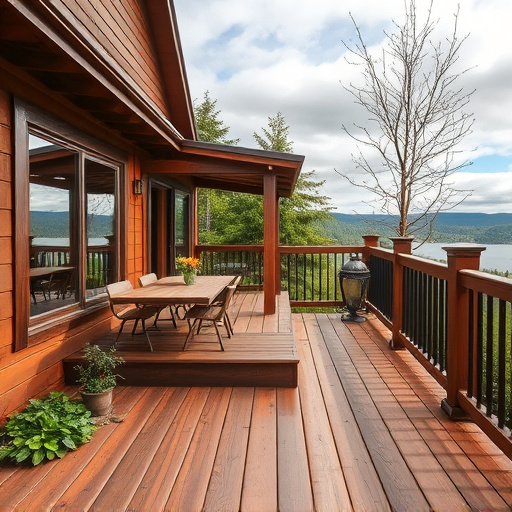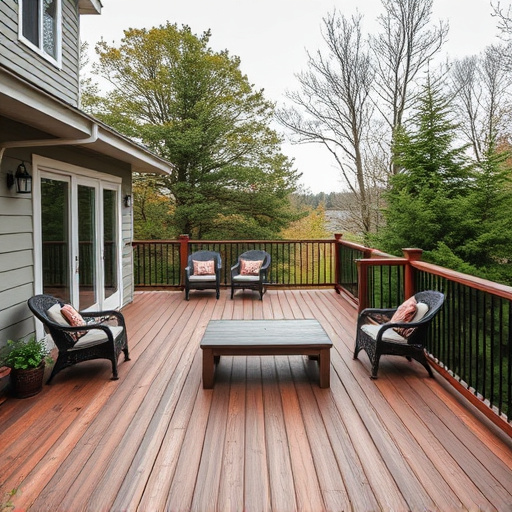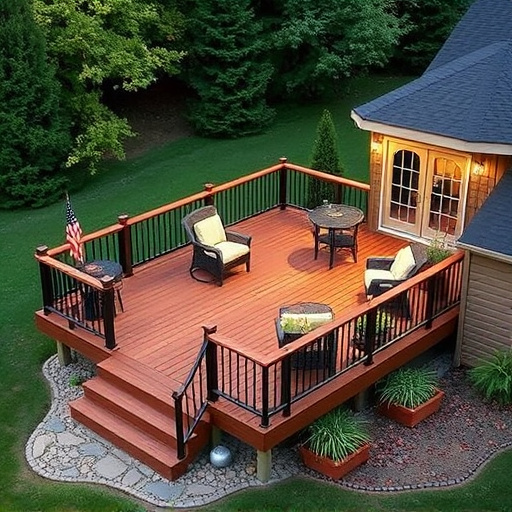Wood decks offer classic appeal but require regular cleaning, sealing, and refinishing for maintenance; prone to rot, splinters, insect damage. Composite materials are durable, low-maintenance, resistant to weather, rotting, and insects, enhancing properties with versatile designs; long-term cost savings over wood despite higher initial costs. For deck upgrade, prioritize longevity, consider composites for reduced maintenance and increased lifespan compared to natural wood.
Considering a deck upgrade? Navigating the wood vs composite debate is crucial for your outdoor oasis. This guide breaks down the pros and cons of traditional wood decks and modern composite materials. We’ll explore benefits like low maintenance and enhanced longevity, while comparing cost-effectiveness. Whether you crave natural beauty or hassle-free living, understanding these options is key to transforming your deck into a truly inviting space.
- Understanding Wood Decks: Pros and Cons
- Composite Materials: Benefits and Features
- Comparing Longevity, Maintenance, and Cost
Understanding Wood Decks: Pros and Cons
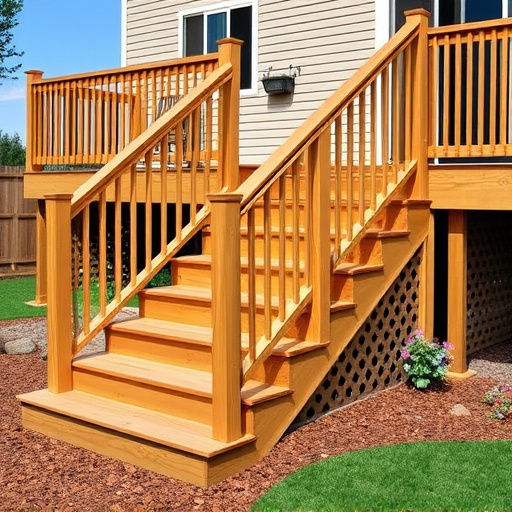
Wood decks have long been a popular choice for outdoor living spaces due to their natural aesthetics and classic charm. When considering a deck upgrade, understanding the pros and cons of wood is essential. One significant advantage is its versatility; wood can be stained or painted in various colors to match your exterior home improvements or personal style. It also offers excellent durability and can last for decades with proper maintenance. Regular cleaning, sealing, and refinishing are relatively straightforward tasks that many homeowners enjoy as part of their outdoor upkeep routine.
However, wood decks have certain drawbacks. They require more meticulous care compared to composite materials, including frequent treatment to prevent rot, splinters, and insect damage. Wood is also susceptible to fading, cracking, or warping over time due to exposure to the elements, which can increase maintenance costs. Moreover, the process of siding installation or roofing and siding replacement might be more complex with wood decks, as they require careful planning and professional expertise to ensure structural integrity.
Composite Materials: Benefits and Features
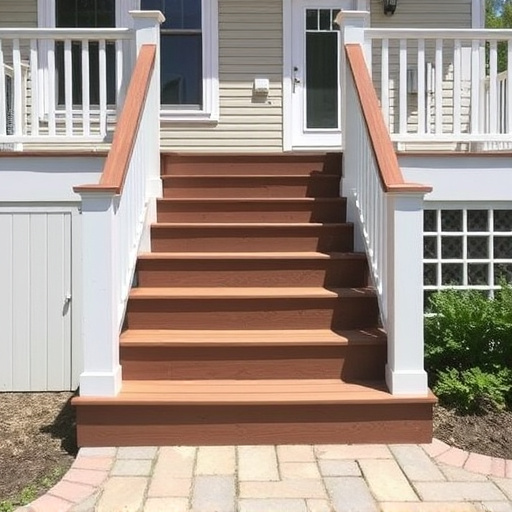
Composite materials have gained significant popularity for deck upgrade projects, offering numerous benefits that cater to modern homeowners’ needs. One of their key advantages is durability; composite decks are designed to withstand harsh weather conditions, including extreme temperatures and heavy rainfall, making them a reliable choice for outdoor spaces prone to storm damage repair. Unlike wood, which can rot or warp over time, composites maintain their structural integrity and aesthetic appeal even after years of exposure to the elements.
Moreover, these materials provide low maintenance, saving homeowners valuable time and money. They are resistant to fading, cracking, and splitting, eliminating the need for frequent cleaning and sealing. This feature is particularly advantageous in commercial roofing applications where aesthetics and functionality must align, ensuring that spaces remain inviting and safe for businesses and their patrons alike. With their versatile designs and color options, composite decks can enhance any outdoor living space, adding value to a property, whether for residential or commercial roof consulting purposes.
Comparing Longevity, Maintenance, and Cost
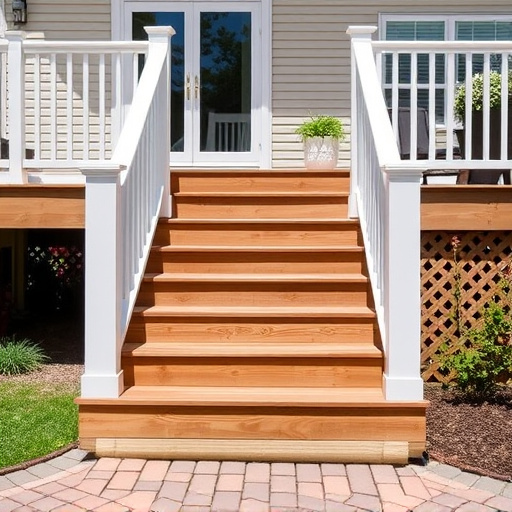
When comparing wood vs composite for a deck upgrade, longevity is a key factor to consider. Natural wood decks offer a timeless aesthetic and can last for decades with proper care, but they require regular maintenance like staining or sealing every few years. In contrast, composite decking materials are designed to resist rot, mold, and insects, significantly extending their lifespan—often outperforming wood in harsh weather conditions. This low-maintenance feature makes them an attractive option for homeowners seeking a long-term solution for their deck upgrade.
In terms of cost, initial expenses for composite decks may be higher than those for wooden ones. However, factoring in the reduced need for ongoing maintenance like painting or replacing siding (relevant for both residential and commercial roofing/siding replacement), composites can provide significant savings over time. Wood decks require regular upkeep, which adds up financially year after year. By choosing composite, you avoid these recurring costs, making it a more cost-effective deck upgrade option in the long run.
When considering a deck upgrade, whether opting for wood or composite materials depends on your preferences and priorities. Wood offers natural aesthetics and classic charm but requires regular maintenance. Composite materials, while more expensive upfront, provide low-maintenance solutions with enhanced durability and resistance to the elements. Evaluating longevity, upkeep, and budget will help guide your decision for a deck upgrade that best suits your needs.
